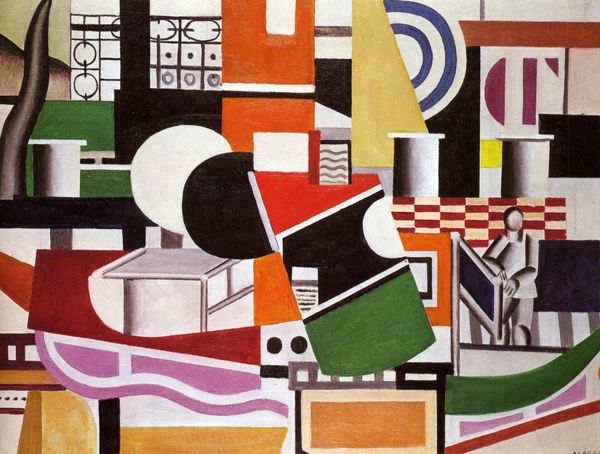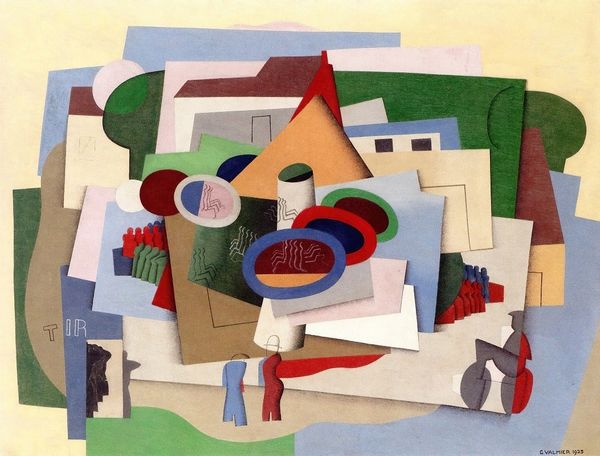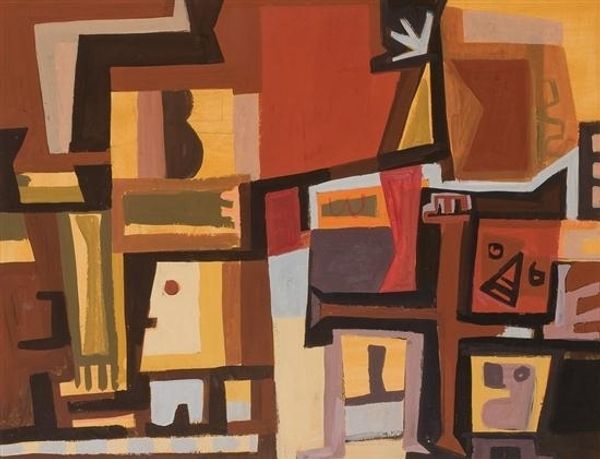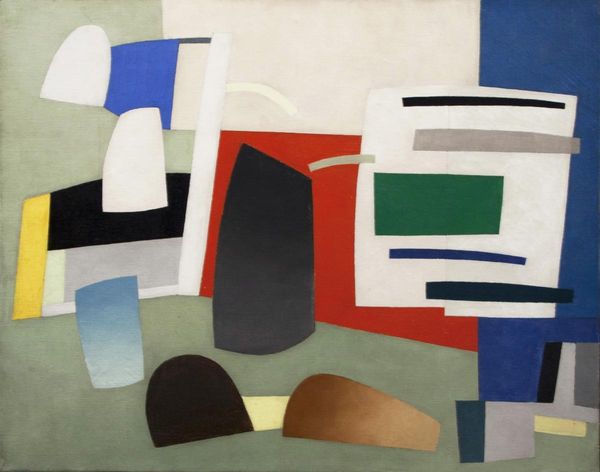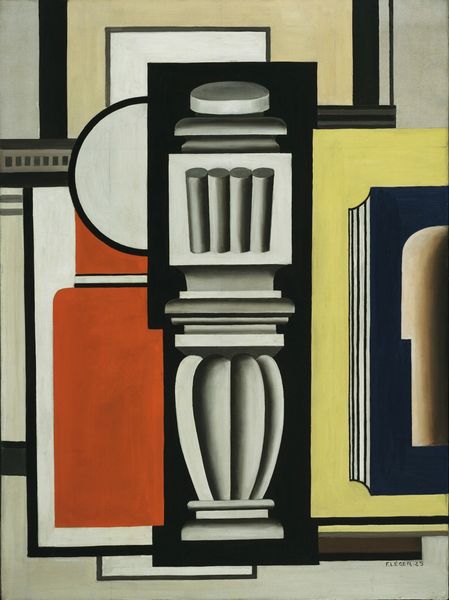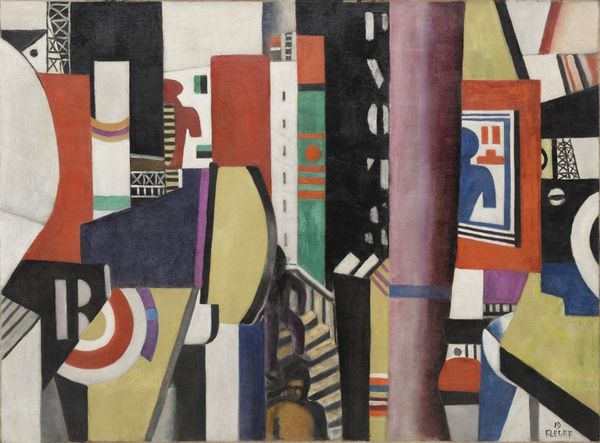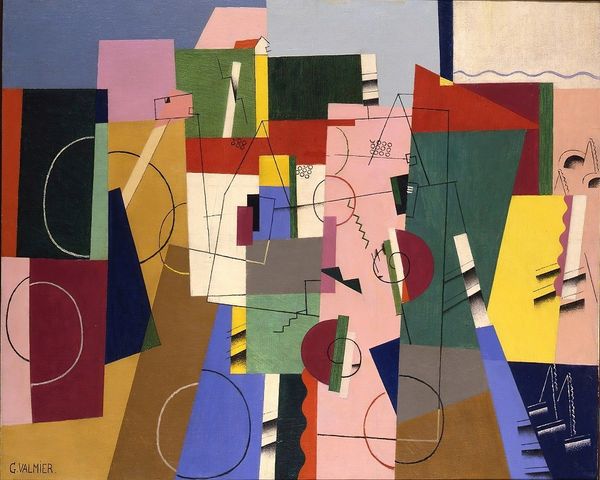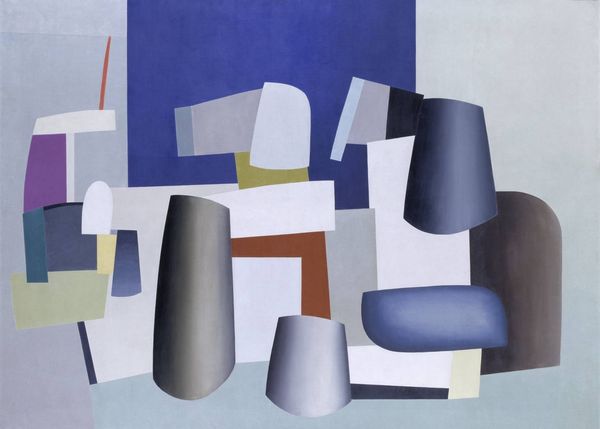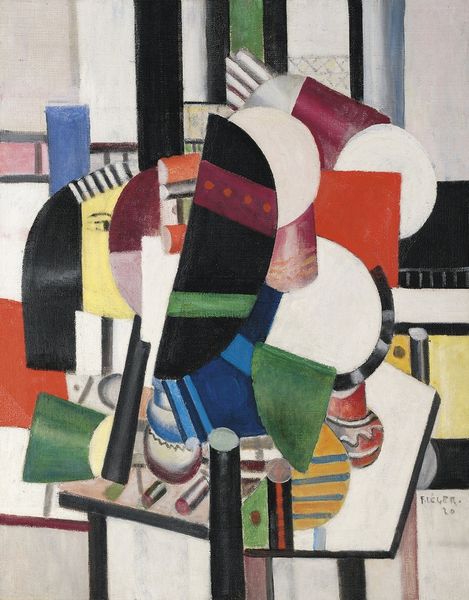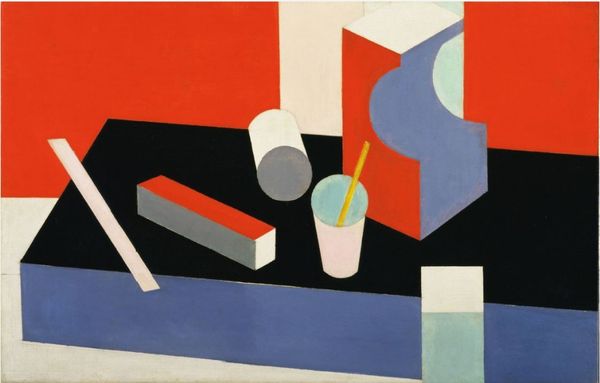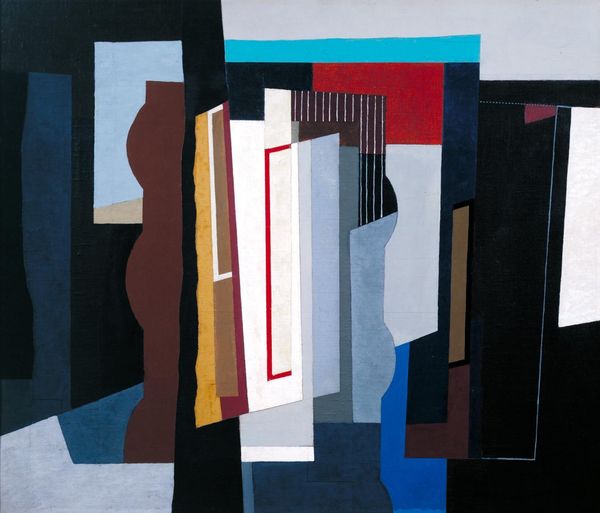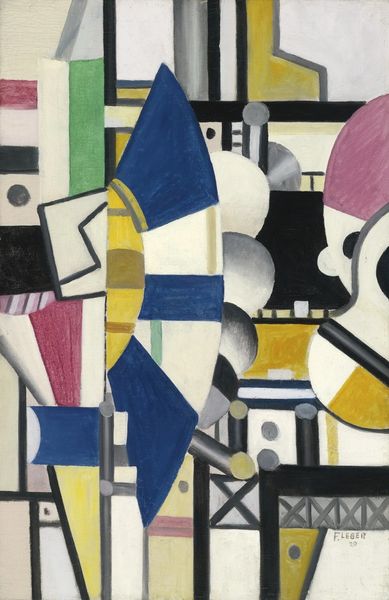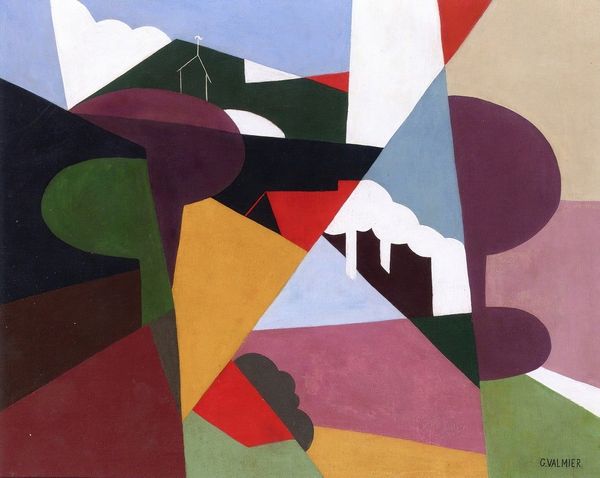
painting, oil-paint
#
cubism
#
painting
#
oil-paint
#
abstract
#
geometric
#
cityscape
#
modernism
Copyright: Modern Artists: Artvee
Curator: Fernand Léger’s “Les Maisons,” painted in 1922. A stunning example of his cubist-inspired style, rendered in oil on canvas. What are your immediate impressions? Editor: It's almost like a blueprint exploded, then was painstakingly reconstructed with bold, flat color blocks. The hard edges give it an intense, industrial feel. It suggests both order and disruption simultaneously. Curator: Exactly! Léger, deeply affected by his experiences during World War I and the rise of industrial production, was fascinated by machines and the modern city. This painting embodies his vision. Look closely; how do the geometric shapes evoke actual architecture, the "houses" of the title? Editor: Well, those stark black rectangles seem to mimic windows, don't they? The varying depths and juxtapositions challenge conventional perspective, giving a fractured sense of space... it resists easy interpretation, as though reflecting the disorientation of post-war society. How might its themes reflect Léger's particular time and place? Curator: I would say profoundly. Léger intentionally reduces buildings to their fundamental forms: cylinders, cubes, and spheres. This is, in part, his tribute to the working class who built these environments. The unmodulated blocks of color feel like mass-produced elements, underscoring the impact of mechanization and celebrating materials over representation. The making of this art celebrates industry itself. Editor: Absolutely, the color palette is particularly intriguing. We have this limited range dominated by primaries like the strong reds and blues mixed with neutral shades. The buildings are essentially reduced to essential elements as you stated. And given when this was created, it reads to me almost like a social commentary; a nod to a kind of reconstruction effort with these sharp angles suggestive of tension inherent in rebuilding both physically and psychologically from traumatic, shared experiences. Curator: Yes, these components embody the resilience and pragmatism required during the interwar era when resources were repurposed toward new possibilities and new artistic creations. What stays with you after encountering Léger's cityscape? Editor: The tension between optimism and anxiety. A dynamic composition built from the simple units celebrates modern life. However, I read a dehumanized anonymity through that simplification. Curator: I agree that the dialogue he fostered between labor, material, and machine challenges viewers to contemplate our own places within rapidly changing, urban landscapes.
Comments
No comments
Be the first to comment and join the conversation on the ultimate creative platform.
